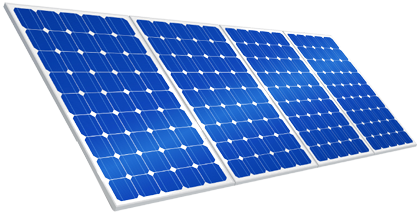In grid connected rooftop or small SPV system, the DC power generated from SPV panel is
converted to AC power using power conditioning unit and is fed to the grid either of 33 kV/11 kV
three phase lines or of 440V/220V three/single phase line depending on the local technical and
legal requirements.

BENEFITS FROM THE GRID CONNECTED ROOFTOP SOLAR SYSTEM
Solar Rooftop System provides following technical benefits:
- Utilization of available vacant roof space;
- Low gestation period;
- Lower transmission and distribution losses;
- Improvement in the tail-end grid voltages and reduction of system congestion;
- Loss mitigation by utilization of distribution network as a source of storage through net metering;
- Long term energy and ecological security by reduction in carbon emission;.
- Abatement of about 60 million tones of CO per year over its life cycle;
- Better Management of daytime peak loads by DISCOM/ utility;
- Meeting of the renewable purchase obligations (RPOs) of obligated entities which are targeted at 8% of electricity consumption;
- Minimal technical losses as power consumption and generation are co- located.
BUSINESS MODELS:
We are Working on two major Business Models:
CAPEX- Capital Expenditures are provided by the rooftop owner;
RESCO / PPA /OPEX– Capital Expenditures are covered by third party. We set both ON SITE/ OFF –SITE Solar Power Plant ( on rooftops, as Carports , on grounds, or on superstructures). These plants integrate seamlessly with the Clients existing grid &/ or DG System.
1)- CAPEX Model- CAPEX mode is the most common business model for solar deployment in India. In this model the consumer purchases the solar system, by making 100% of the payment upfront or financing the system, often through a bank.

2)- RESCO (Renewable Energy Service Company) / OPEX (Operational Expenditure ) Model- Under this model, a RESCO developer finances, installs, operates and maintains the rooftop solar power plant. The developer signs an agreement with the rooftop owner. The rooftop owners may consume the electricity generated, for which they have to pay a pre-decided tariff to RESCO developer on a monthly basis for the tenure of the agreement.
Based on the consumption choice and requirement, this model is further divided into two types 1)- Rooftop Leasing
2)- Power Purchase Agreement (PPA).
Rooftop Leasing (Under Gross Metering)
Under this arrangement, the RESCO developer leases the rooftop and pays a fixed lease/ rental to the building owner over the time of the lease period for installing the solar panels of the rooftop. The RESCO developer exports the solar energy to the utility at a predetermined feed-in-tariff (FiT) approved by the regulator.

Power Purchase Agreement (Under Net Metering)
Here the RESCO developer invests in solar rooftop asset, and sells the generated power to the building owner in favor of a lower solar power tariff. The excess power could be sold by the building owner to the utility through net metering system.









